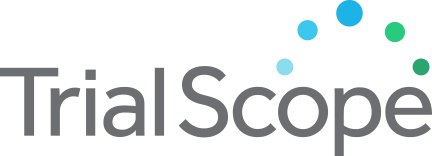TyrosIne Kinase Inhibitors in Chronic Myeloid Leukemia: Efficacy and Tolerability. The TIKlet Study
Study Purpose
Rationale. The pharmacokinetics of imatinib and nilotinib, two BCR/Abl tyrosine-kinase inhibitors (TKI), is variable among patients suffering from chronic myeloid leukemia (CML). Transmembrane transporters may play a pivotal role in interindividual variability in TKI disposition. Furthermore, minimum plasma concentrations (Cmin) higher than 1 mg/L could be associated with a higher likelihood of molecular and cytogenetic responses. The TIKlet study is aimed at evaluating correlations among the pharmacogenetics, pharmacokinetics and treatment efficacy/tolerability of imatinib and nilotinib in CML patients. 1. PATIENTS AND METHODS. 1.1. Patients. Patients affected by CML will be enrolled after the informed consent will be signed, according to the following inclusion criteria:
- - patients of both sexes, - age between 18 and 80 years, - treated with imatinib or nilotinib, - included in follow-up activities at the participating Hematology Divisions, - able to give informed consent, - with a proved compliance with the scheduled treatment.
- - patients will be informed about the study, their signed informed consent form will be collected and an individual alphanumeric code will be assigned.
- - Patients' data will be recorded within the individual case report form (CRF) and a blood sample will be obtained.
Recruitment Criteria
|
Accepts Healthy Volunteers
Healthy volunteers are participants who do not have a disease or condition, or related conditions or symptoms |
No |
|
Study Type
An interventional clinical study is where participants are assigned to receive one or more interventions (or no intervention) so that researchers can evaluate the effects of the interventions on biomedical or health-related outcomes. An observational clinical study is where participants identified as belonging to study groups are assessed for biomedical or health outcomes. Searching Both is inclusive of interventional and observational studies. |
Observational |
| Eligible Ages | 18 Years - 80 Years |
| Gender | All |
Trial Details
|
Trial ID:
This trial id was obtained from ClinicalTrials.gov, a service of the U.S. National Institutes of Health, providing information on publicly and privately supported clinical studies of human participants with locations in all 50 States and in 196 countries. |
NCT01860456 |
|
Phase
Phase 1: Studies that emphasize safety and how the drug is metabolized and excreted in humans. Phase 2: Studies that gather preliminary data on effectiveness (whether the drug works in people who have a certain disease or condition) and additional safety data. Phase 3: Studies that gather more information about safety and effectiveness by studying different populations and different dosages and by using the drug in combination with other drugs. Phase 4: Studies occurring after FDA has approved a drug for marketing, efficacy, or optimal use. |
|
|
Lead Sponsor
The sponsor is the organization or person who oversees the clinical study and is responsible for analyzing the study data. |
University of Pisa |
|
Principal Investigator
The person who is responsible for the scientific and technical direction of the entire clinical study. |
Sara Galimberti, MD, PhDAntonello Di Paolo, MD, PhD |
| Principal Investigator Affiliation | Department of Clinical and Experimental Medicine, University of PisaDepartment of Clinical and Experimental Medicine, University of Pisa |
|
Agency Class
Category of organization(s) involved as sponsor (and collaborator) supporting the trial. |
Other |
| Overall Status | Recruiting |
| Countries | Italy |
|
Conditions
The disease, disorder, syndrome, illness, or injury that is being studied. |
Chronic Myeloid Leukemia |
Contact a Trial Team
If you are interested in learning more about this trial, find the trial site nearest to your location and contact the site coordinator via email or phone. We also strongly recommend that you consult with your healthcare provider about the trials that may interest you and refer to our terms of service below.
International Sites
Site by: Kaleidoscopic

